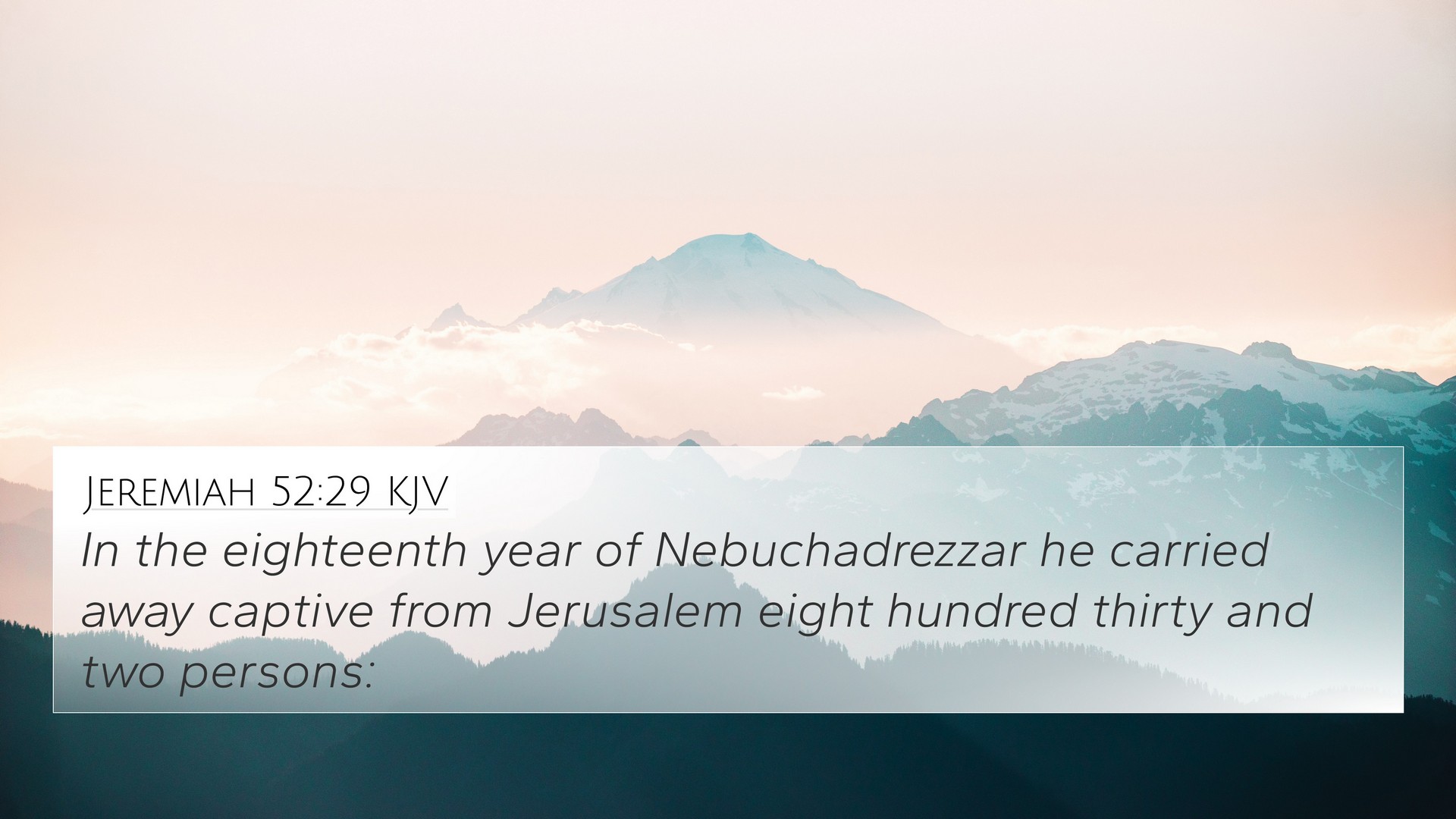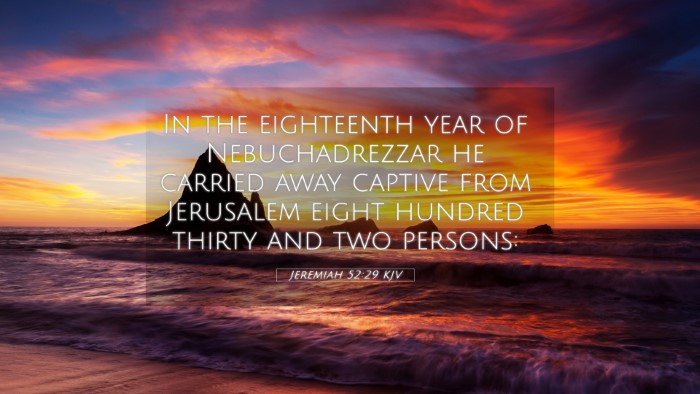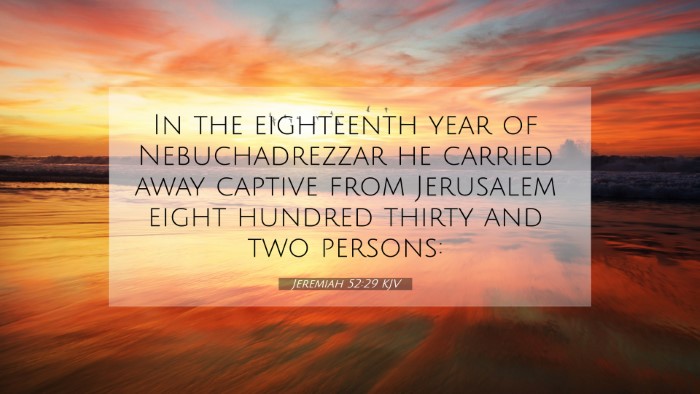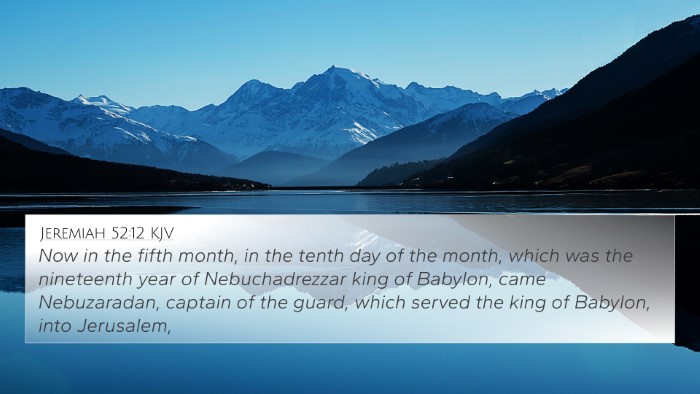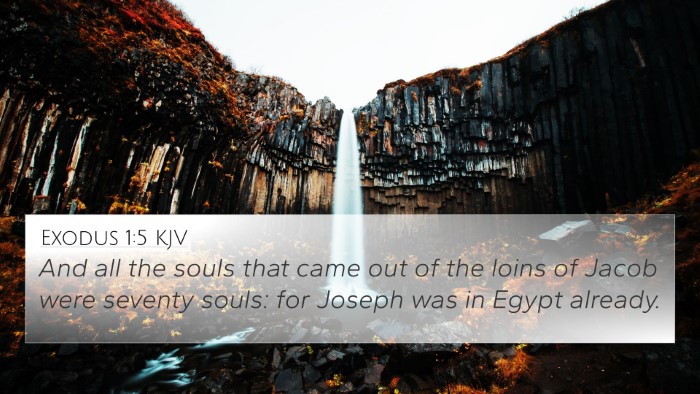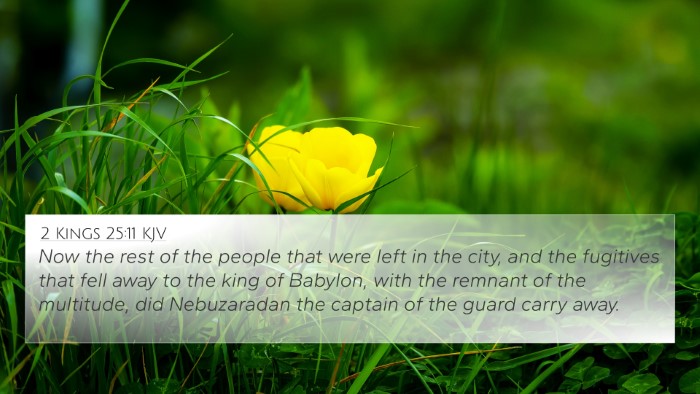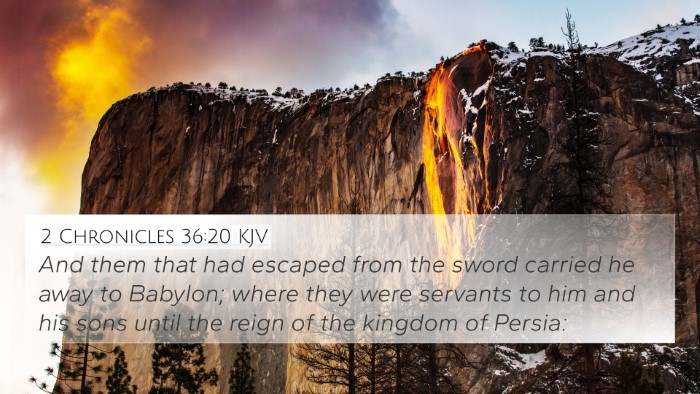Understanding Jeremiah 52:29
Jeremiah 52:29 reads: "And in the five and twentieth year of Nebuchadnezzar king of Babylon, Nebuzaradan, captain of the guard, carried away captive of the Jews seven hundred forty and five persons: all the persons were four thousand and six hundred." This verse concludes the account of the fall of Jerusalem and the subsequent exile of the Jews, providing a historical context to the prophecy and its fulfillment.
Contextual Background
The verse is set during a critical period in Jewish history. It highlights the detailed records maintained by the Babylonians regarding the number of captives taken during their conquest. Historical context gives us valuable insights into the lives of the Israelites during the Babylonian exile, the consequences of their disobedience, and God’s overarching sovereignty over nations.
Commentary Insights
- Matthew Henry: Henry emphasizes the methodical way in which God’s judgment fell upon the people. He points out that captivity was not just an act of physical removal but a profound spiritual consequence of turning away from God. The figure of 745 captives indicates a remnant taken from the land, a sobering reminder of the cost of sin.
- Albert Barnes: Barnes notes that such specifics in numbers serve to illustrate God’s severe judgments and the meticulous nature of Babylonian records. He connects this verse to the larger theme of captivity as part of God’s plan for repentance and restoration.
- Adam Clarke: Clarke explains the significance of Nebuzaradan’s role as the captain of the guard, showcasing Babylon’s military organization. He also mentions that these captives, though taken away, were part of the divine narrative that would eventually lead to restoration as prophesized by Jeremiah.
Bible Verse Cross-References
This verse can be linked to several other passages which explore the themes of exile, captivity, and divine judgment:
- 2 Kings 25:11-12: Details the destruction of Jerusalem and capture of its people.
- Jeremiah 39:9: Discusses the carrying away of captives.
- 2 Chronicles 36:20-21: Ties in the themes of exile, fulfilling Jeremiah's prophecies.
- Ezekiel 12:15: Relates to the dispersion of the Israelites and their consequences.
- Lamentations 1:3: Sheds light on the sorrow of those exiled from the land.
- Daniel 1:1-2: Introduces the captivity period and the select young men taken to serve in Babylon.
- Psalms 137:1: Expresses the lamentation of the exiled Jews, highlighting their longing for Jerusalem.
Thematic Bible Verse Connections
The central theme of Jeremiah 52:29 is the judgment of God juxtaposed with the hope of future restoration. The exile serves as a poignant reminder that God’s discipline, although painful, leads to eventual deliverance:
- The concept of remnant is prevalent throughout Scripture, illustrating God’s preservation of a faithful group.
- Restoration theme: Similar to the messages in Isaiah 40:1-2, which offers comfort and future hope.
- Divine sovereignty: Echoes in Romans 8:28, where all things work together for good for those who love God.
Applying Cross-Reference Tools
To study how the themes of this verse resonate with others, one may utilize tools for Bible cross-referencing, such as Bible concordances or cross-reference guides. This approach aids in identifying connections between the Old Testament prophecies and their New Testament fulfillments.
Conclusion
Jeremiah 52:29 serves as a critical juncture in the journey of Israel, reflecting on the consequences of sin while also nudging towards hope and restoration. Understanding its connection with other verses enriches our biblical narrative comprehension, paving the way for deeper studies in cross-referencing biblical texts.
Further Study Recommendations
For those interested in a deeper dive, here are some focused studies you might consider:
- How to find cross-references in the Bible: Methods for identifying related verses.
- Identifying connections between the Old and New Testament: A study on thematic continuity.
- Comparative study of Pauline epistles: Exploring themes of captivity and freedom.
